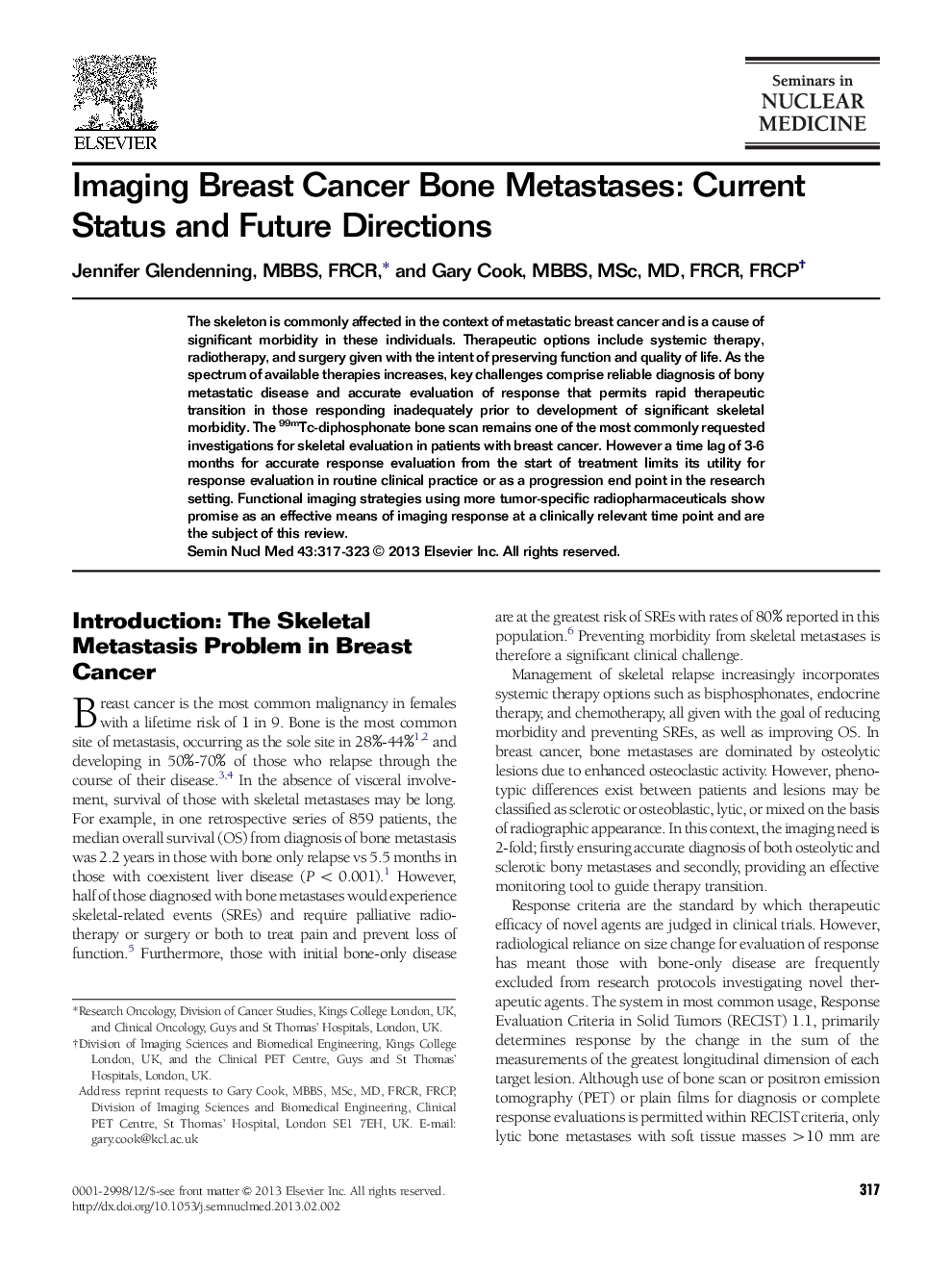| Article ID | Journal | Published Year | Pages | File Type |
|---|---|---|---|---|
| 4251107 | Seminars in Nuclear Medicine | 2013 | 7 Pages |
The skeleton is commonly affected in the context of metastatic breast cancer and is a cause of significant morbidity in these individuals. Therapeutic options include systemic therapy, radiotherapy, and surgery given with the intent of preserving function and quality of life. As the spectrum of available therapies increases, key challenges comprise reliable diagnosis of bony metastatic disease and accurate evaluation of response that permits rapid therapeutic transition in those responding inadequately prior to development of significant skeletal morbidity. The 99mTc-diphosphonate bone scan remains one of the most commonly requested investigations for skeletal evaluation in patients with breast cancer. However a time lag of 3-6 months for accurate response evaluation from the start of treatment limits its utility for response evaluation in routine clinical practice or as a progression end point in the research setting. Functional imaging strategies using more tumor-specific radiopharmaceuticals show promise as an effective means of imaging response at a clinically relevant time point and are the subject of this review.
